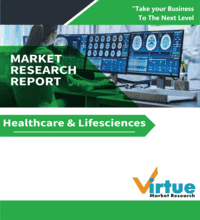The Head and Neck Cancer Market encompasses the treatment, diagnosis, and management of malignancies affecting the oral cavity, pharynx, larynx, salivary glands, and other related regions. These cancers, predominantly squamous cell carcinomas, represent a significant healthcare burden due to late-stage diagnoses and limited treatment options. Advances in immunotherapy, targeted therapy, and combination regimens have revolutionized the treatment paradigm, offering improved outcomes and presenting new growth opportunities in this dynamic market.
Disruptive Impact and Opportunities:
Emerging therapies such as TECENTRIQ (Atezolizumab), KEYTRUDA (Pembrolizumab), XEVINAPANT (Debio 1143), Toripalimab, and Tipifarnib are at the forefront, redefining treatment protocols and targeting novel pathways. The rise of targeted oral therapies and personalized medicine simplifies treatment for patients while reducing systemic toxicity. Immunotherapies and precision drugs improve safety profiles, minimizing adverse effects compared to traditional chemotherapy. With increasing incidence rates and unmet clinical needs, the market presents vast growth potential for pharmaceutical and biotech companies.
Emerging Drugs:
- TECENTRIQ (Atezolizumab)
- KEYTRUDA (Pembrolizumab)
- XEVINAPANT (Debio 1143)
- Toripalimab
- Tipifarnib
Marketed Drugs:
- Bleomycin Sulfate
- Cetuximab / Erbitux
- Docetaxel
- Hydrea (Hydroxyurea)
- Methotrexate Sodium
Key Companies:
- CEL-SCI
- Junshi Biosciences
- Coherus
- Exelixi
- Immutep S.A.S.
- Merck Sharp & Dohme LLC
- Iovance Biotherapeutics
- BeiGene, Akeso
- Chia Tai-Tianqing
- Kura Oncology
- Hoffmann-La Roche
Market Segmentation:
By Type
· Squamous Cell Carcinoma
- Oral Cavity Cancer
- Laryngeal Cancer
- Oropharyngeal Cancer
- Nasopharyngeal Cancer
- Hypopharyngeal Cancer
- Sinonasal Cancer
· Adenocarcinoma
· Salivary Gland Tumors
- Mucoepidermoid Carcinoma
- Adenoid Cystic Carcinoma
- Acinic Cell Carcinoma
· Other Types
- Sarcomas
- Lymphomas
- Melanomas
By Administration Type
· Intravenous (IV)
- Chemotherapy (e.g., Platinum-Based Drugs, Taxanes)
- Immunotherapy (e.g., Checkpoint Inhibitors)
- Targeted Therapy (e.g., EGFR Inhibitors)
· Oral
- Targeted Therapy (e.g., Tyrosine Kinase Inhibitors)
- Hormonal Therapy
· Subcutaneous/Intradermal
- Monoclonal Antibodies
- Vaccines
· Topical
- Localized Treatments (for superficial cancers)
· Others
- Combination Therapies
- Locoregional Administration
What’s in It for You?
- In-depth analysis of emerging and marketed therapies, providing strategic insights for portfolio expansion.
- Competitive landscape evaluation to identify potential collaborations and acquisition opportunities.
- Data-driven recommendations for R&D prioritization and market entry strategies.
- Comprehensive insights into unmet clinical needs and evolving regulatory trends to inform investment decisions.
Head and Neck Cancer Market Analysis (Market Size & CAGR, Epidemiology, Marketed Therapies, Emerging Drugs, Clinical Trials, Key Approvals & Anticipated Loss of Exclusivity, Opportunities, Unmet Needs, Company Profiles)
1. Head and Neck Cancer Market - Executive Summary
1.1 Introduction
1.2 Objectives
1.3 Key Findings
1.3.1 Market Size 2025 & 2030: By Key Country (10MM)
1.3.2 Global Market Size 2025 & 2030: By Key Segment
1.3.3 Key Investments & Startup Analysis
1.4 Research Methodology
2. Understanding the Disease
2.1 Disease Overview
2.2 Classification
2.3 Signs and Symptoms
2.4 Risk Factors
2.5 Causes
2.6 Disease Biology & Digital Innovations
2.7 Stages & Staging System
2.8 Diagnostic Algorithm
2.9 Current Treatment Practices & Algorithm
2.10 Current Standard of Care and Treatment Gaps
2.11 Patient Demographics and Treatment Pathways
3. Guidelines
4. Unmet Needs
5. Epidemiology and Patient Population
5.1 Epidemiology Key Findings
5.2 Assumptions and Rationale: 10MM
5.3 Epidemiology Scenario: 10MM
5.4 U.S. Epidemiology Scenario
5.5 EU-5 Epidemiology
5.5.1 U.K. Epidemiology Scenario
5.5.2 Germany Epidemiology Scenario
5.5.3 France Epidemiology Scenario
5.5.4 Italy Epidemiology Scenario
5.5.5 Spain Epidemiology Scenario
5.6 Japan Epidemiology Scenario
5.7 China Epidemiology Scenario
5.8 Australia Epidemiology Scenario
5.9 India Epidemiology Scenario
6. Real-world Data & Real-world Evidence
7. Drug Development Landscape
7.1 Existing Key Drug Candidate Profiles/ Marketed Therapies
7.1.1 Erbitux (Cetuximab)
7.1.1.1 Product Description
7.1.1.2 Regulatory Milestones
7.1.1.3 Other Developmental Activities
7.1.1.4 Pivotal Clinical Trials
7.1.1.5 Ongoing Current Pipeline Activity
7.1.2 Hydrea (Hydroxyurea)
7.1.2.1 Product Description
7.1.2.2 Regulatory Milestones
7.1.2.3 Other Developmental Activities
7.1.2.4 Pivotal Clinical Trials
7.1.2.5 Ongoing Current Pipeline Activity
7.1.3 Keytruda (Pembrolizumab)
7.1.3.1 Product Description
7.1.3.2 Regulatory Milestones
7.1.3.3 Other Developmental Activities
7.1.3.4 Pivotal Clinical Trials
7.1.3.5 Ongoing Current Pipeline Activity
7.2 Competitive Analysis and Differentiation
7.3 Overview of Similar/Competing Drugs in Clinical Trials
7.4 Future Trends and Emerging Drugs
7.4.1 TECENTRIQ (Atezolizumab)
7.4.1.1 Product Description
7.4.1.2 Clinical Development
7.4.1.3 Safety and Efficacy
7.4.2 XEVINAPANT (debio 1143)
7.4.2.1 Product Description
7.4.2.2 Clinical Development
7.4.2.3 Safety and Efficacy
7.4.3 Toripalimab
7.4.3.1 Product Description
7.4.3.2 Clinical Development
7.4.3.3 Safety and Efficacy
8. Regulatory Strategy and Potential Challenges
8.1 Regulatory Pathways in Key Markets
8.2 Anticipated Regulatory Hurdles and Mitigation Strategies
8.3 Case Studies in Oncology Drug Regulation
8.4 Impact of Potential Changes to Regulatory Framework
9. Commercial Landscape
9.1 Market Size & Growth Rates
9.2 Key Approvals & Anticipated Loss of Exclusivity
9.3 PESTLE & Porter’s Five Forces Analysis
9.4 Market Shares, Positioning/Ranking
9.5 Market Drivers
9.6 Identification of Threats
9.7 Digital Evolution in Commercialization
10. Market Segmentation
10.1 Market by Route of Administration
10.1.1 Injectable
10.1.2 Oral
10.2 Market by Therapy Type
10.2.1 Chemotherapy
10.2.2 Immunotherapy
10.2.3 Targeted Therapy
10.2.4 Others
11. Pricing, Reimbursement, and Access
11.1 Competitive Pricing Analysis
11.2 Reimbursement Landscape and Challenges
11.3 Strategies for Market Access and Equity
11.4 Patient Spending/Expenditure Analysis
12. Future Trends, Disruptions, and Opportunities
12.1 Analysis of Emerging Trends
12.2 Technological Impact
12.3 Impact of Potential Market Disruptors
12.4 Opportunities for Future Development and Expansion
12.5 Considerations for Investment Opportunities
13. Global Market Dynamics
13.1 Regional Regulatory Disparities
13.2 Cross-Border Partnership Strategies
13.3 Global Supply Chain Dynamics
13.4 Case Studies: Success and Failure in Global Markets
13.5 Strategies for Global Expansion and Localization
14. Company Profiles
14.1 Exelixis
14.2 Immutep S.A.S.
14.3 Merck Sharp & Dohme LLC
14.4 Iovance Biotherapeutics
14.5 BeiGene
14.6 Akeso
14.7 Chia Tai-Tianqing
14.8 Kura Oncology
14.9 Hoffmann-La Roche
14.10 Eli Lilly and Company
Download Sample
Choose License Type
2500
4250
5250
6900



